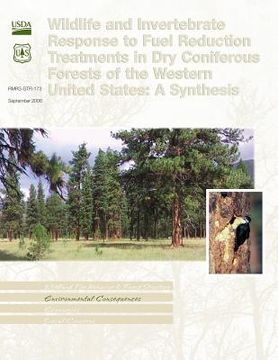Wildlife and Invertebrate Response to Fuel Reduction Treatments in Dry Coniferous Forests of the Western United States: A Synthesis
Synopsis "Wildlife and Invertebrate Response to Fuel Reduction Treatments in Dry Coniferous Forests of the Western United States: A Synthesis"
This paper synthesizes available information on the effects of hazardous fuel reduction treatments on terrestrial wildlife and invertebrates in dry coniferous forest types in the West. We focused on thinning and/or prescribed fire studies in ponderosa pine (Pinus ponderosa) and dry-type Douglas-fir (Pseudotsuga menziesii ), lodgepole pine (Pinus contorta), and mixed coniferous forests. Overall, there are tremendous gaps in information needed to evaluate the effects of fuel reduction on the majority of species found in our focal area. Differences among studies in location, fuel treatment type and size, and pre- and post-treatment habitat conditions resulted in variability in species responses. In other words, a species may respond positively to fuel reduction in one situation and negatively in another. Despite these issues, a few patterns did emerge from this synthesis. In general, fire-dependent species, species preferring open habitats, and species that are associated with early successional vegetation or that consume seeds and fruit appear to benefit from fuel reduction activities. In contrast, species that prefer closed-canopy forests or dense understory, and species that are closely associated with those habitat elements that may be removed or consumed by fuel reductions, will likely be negatively affected by fuel reductions. Some habitat loss may persist for only a few months or a few years, such as understory vegetation and litter that recover quickly. The loss of large-diameter snags and down wood, which are important habitat elements for many wildlife and invertebrate species, may take decades to recover and thus represent some of the most important habitat elements to conserve during fuel reduction treatments. Management activities that consider the retention of habitat structures (such as snags, down wood, and refugia of untreated stands) may increase habitat heterogeneity and may benefit the greatest number of species in the long run.

